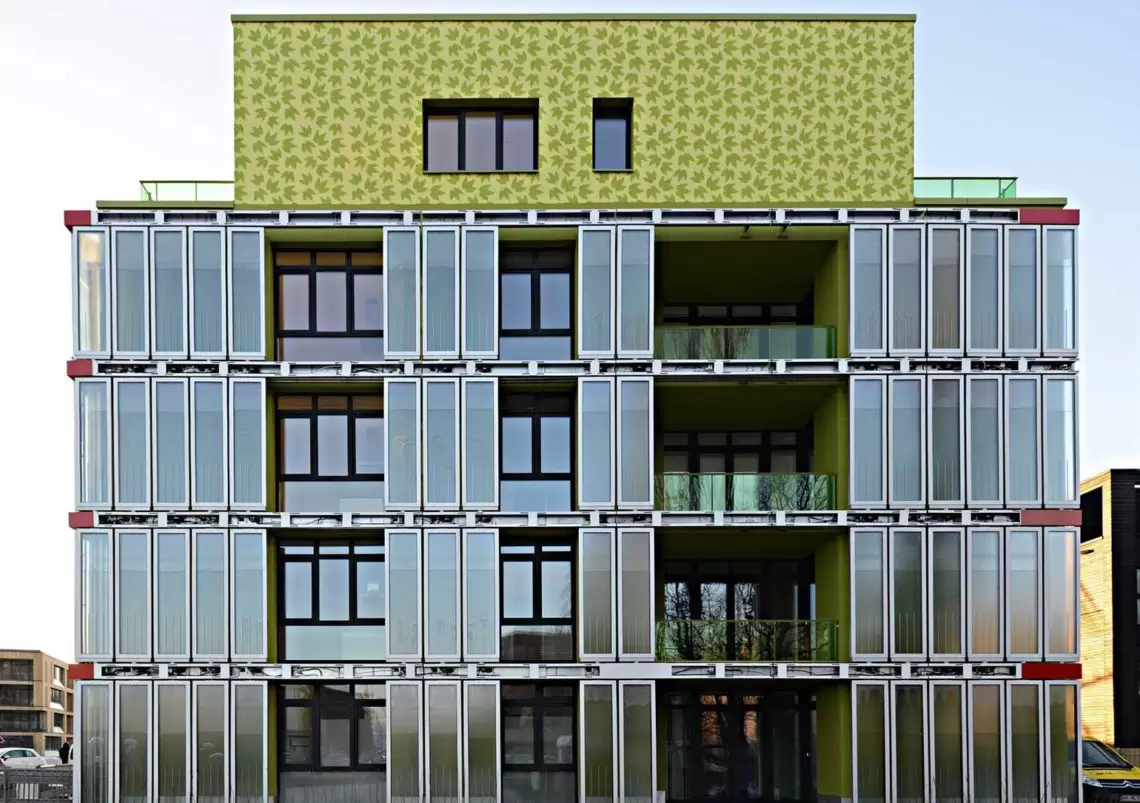From food to fibre, fuel and fertiliser, algae has great potential as a sustainable resource. And we could soon add building technology to that list.
For Professor Sara Wilkinson, formerly a practicing building surveyor, studying algae wasn’t a lifelong goal.
“If you’d have said to me 20 years ago, or even five years ago, ‘You’re going to be working with algae and you’re going to think it’s really great’, I would’ve said, ‘You’re joking’,” Wilkinson laughed.
But algae is now a large part of her work at the University of Technology Sydney (UTS), where she’s leading a transdisciplinary research project into the application of algae-powered building technology in Australia.
The concept is based on the Bio Intelligent Quotient (BIQ) building in Hamburg, Germany, a four-storey residential block designed as part of an exhibition on sustainable buildings. Here, panels filled with algae and water comprise the building façade, generating solar thermal energy as well as producing biomass, which, when converted to biofuel, provides a renewable energy source.
Interested in adapting the technology for the Australian environment, Wilkinson commenced a feasibility study in 2015, funded by the City of Sydney. This involved interviewing 23 different environment professionals, from mechanical, electrical and structural engineers to planners, valuers and architects.
“The idea was to find out what everybody thought about algae building technology, and from their professional perspectives the barriers, challenges, drivers and opportunities,” Wilkinson said.
In collaboration with industry partners, the project has now moved to the design, fabrication and testing phase.
“Currently there are two panels mounted on the roof of the science faculty buildings [at UTS],” Wilkinson said.
“We’re in the process of commissioning the panels and will then test solar thermal energy production and algal biomass production.”
Wilkinson expects data collection to begin in late 2019 or early 2020. The testing will run for a calendar year, allowing seasonal variation and different orientations to be investigated.
“[The panels] are small enough for us to be able to relocate and re-site them … [We will] be able to move them to a different orientation to see whether there are differences in panels that are north-facing or east-facing,” she said.
Finding the right fit
Wilkinson predicts the greatest challenge for the project will be keeping the algae alive during Sydney’s summer heat – quite a different climate to Hamburg.
“Sydney summers are very intense and getting hotter … Having said that, we will use a local algae species, which is something that should survive quite happily in our temperature,” she said.
“We’re planning to trial a number of different species to see if there is some variation, and what works best here.”
And, with an estimated 500,000 species of algae in the world, Wilkinson is confident about finding the right fit. She’s also optimistic about the future cost effectiveness of the technology.
“Compared with other renewables, it is currently very expensive. However, once you adopt a technology, you get economies of scale and you get improvements,” she said.
“[For example], if you go back to the late 1950s, 1 watt of solar energy cost $2700 in 2014 prices. By 2016, 1 watt of solar energy was $1.14 … You might go for many years with nothing happening, and then all of a sudden a lot of things happen. Ask me in another 60 years, and we might all be using algae, who knows.”
Wilkinson also notes that the future opportunities for algae-based technology are vast.
“Algae is an amazing organism with so many uses, such as food, fibre, fuel, fertiliser … It may be that we put algae onto buildings not necessarily for fuel, but for fertiliser for urban farms,” she said.
“I think as the climate crisis continues, we will see more recognition of algae as an organism with many uses and benefits for humans.”



